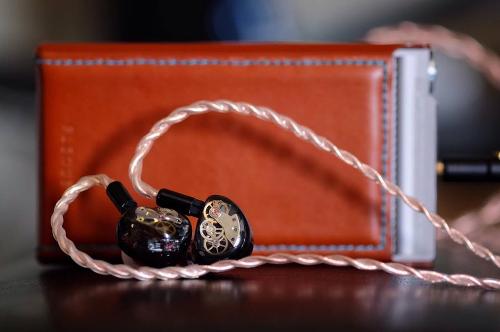Over the last years, the custom in-ear market has been on the rise, emanating a growth of boutique manufacturers. As a result, it might seem as if more traditional manufacturers as Westone have taken a step back, but nothing is less true – Westone remains a powerhouse in the industry, and keeps working hard to improve themselves in the background. A short while back they launched their new universal flagship, the W80, tuned with the traditional Westone house-sound. But shortly after came the ES80, a more technical tuning, aimed at musicians and producers. At least, that might have been the target – with its top performance, the ES80 is equally bound to find a way to the heart of the modern audiophile.
Westone ES80
Drivers: 8 BA drivers
Design: 3-Way passive crossover
Sensitivity: 111 dB @ 1 mW
Impedance: 80 Ohms
PRICE: $1899

Build and design
Westone isn’t particularly known for extravagant designs. Which can’t be contributed to their lack of trying, for they offer one of the most varied options for customization. They offer a wide selection of options for the shell body, besides countless faceplate materials and designs. To make matters worse, since you can easily spend a day on mixing and matching, there are even additional options for customization of the faceplates. It’s fun to check out and play around with their custom builder. I personally opted for silver flakes with a granite faceplate.
The monitor is built with a silicone nozzle and acrylic shell, a mixed design that Westone traditionally uses for their custom in-ears. It ensures a comfortable fit, while maintaining the advantages of the acrylic shell in terms of durability and maintenance. Despite its 8 drivers, the ES80 is a bit larger than most ciems, protruding slightly more out of the ear. The build quality is impeccable: very smooth, and without noticeable bubbles. The fit is perfect, and very comfortable due to the silicone lower body.
Accessories
The ES80 diverges from the standard accessory package by providing a fairly large carrying case, with ample room to fit the ES80, as well as both cables. In addition, there’s a fixed space for Westone’s insertion gel, a cleaning tool, and dehumidifying package. As a nice extra, there’s a cleaning cloth with the Westone logo. The ALO Ref 8 cable comes in a neat carrying pouch of its own. All in all, a quality package.

Cables
The ES80 comes stock with two cables: a standard Epic OFC copper cable, as well as the quality ALO Ref 8 cable; an 8-braid copper and SPC hybrid. The two cables differ in ergonomics; the Epic is lightweight and thin, while the Ref 8 is more rigid, and passes on some microphonics. More importantly however, are their differences in sound, for the two give the ES80 quite a different character when it comes to tone and presentation. The Ref 8 gives the ES80 a more aggressive, forward character. Its instruments have greater body, while its mid-bass gains in quantity, and accordingly, impact. At the same time however, the signature is somewhat void of warmth. While this results in greater clarity, there’s a slight tradeoff for tone, depending on preference. The ES80 hovers around neutral, and is somewhat dependent on the cable in this regard. In addition, its stage is a bit deeper compared to the pairing with the Epic cable.
When paired with the standard Epic cable, the ES80 is lightly warm, and smoother in tone – a more linear signature. Its instruments are leaner in body, and placed in a flatter, but wide, stretched out stage. In addition, its imaging is slightly more precise, resulting in a more focused image. It is near-impossible to predict which cable pairing one might prefer, as they each have their own advantage, and pair better with different types of music or sources; but it's nice to have the options. For this review, I based the sound impressions on the ES80 paired with the Epic cable, and my RW AK380cu.
Sound impressions
Presentation
Paying $1900 for a custom in-ear monitor comes with certain expectations, especially if it’s the first time. The high cost should yield a certain reward in terms of improvement, an upgrade over previous equipment. When it comes to high-fidelity sound, this doesn’t just translate to tone, but performance: a precise image, resulting from high definition. The ES80 was built for resolution. It doesn’t just provide that sense of improvement over sub-par gear, but in certain aspects, even over top-tier equipment. This emanates from its excellent extension on both ends, and fairly linear signature. The deeper origin: its custom-built BA drivers, specifically designed for this purpose. Accordingly, the ES80 provides an exceptionally highly resolved sound, while maintaining a neutral, yet smooth signature.
Similarly, the ES80’s presentation is neutral in terms of stage positioning. Neither overly forward, nor laidback. Its stage is wider than average. But again, it’s its technical proficiency that stands out; the quality within the stage. Not only is its imaging precise, but its notes are set against a stable black background. The result is a remarkably clean and focused image, despite a lightly warm tone. It’s a presentation that allows detail to stand out, by means of the stability of the image – its separation is excellent. For even though its stage isn’t overly deep, its layering is precise, and the ES80 never tends to congestion; the ES80 takes full advantage of its high resolution, and leaner instrument size.

Bass
The quality of its top-end extension has far-reaching effects, returning throughout the signature. Starting from its role in shaping the bass: the mid-bass is highly resolved, with precise contours marking its form – a well-defined mid-bass, with excellent separation between the sub- and mid-bass. A controlled bass, and a fast one. Even so, it's not a lean bass, which leaves one wanting. Despite remaining close to neutral in quantity, its mid-bass provides sufficient impact, and a rhythmic dynamic to the sound.
But it’s especially its bottom-end extension that provides a sense of power to the sub-bass: a tight, but hard-hitting impact, especially enjoyable for electronic beats. Overall, it’s a bass tuning in line with its technical approach. Importantly, this doesn't mean it lacks engagement by any means; especially the depth to which its sub-bass hits is addictive. Rather, its technical proficiency contributes to the sense of enjoyment, by constructing a complete bass on many fronts: definition, detail, and low-end impact, rather than mere quantity.

Midrange
But the advantages of its highly resolved bass transcend the definition of bass notes – the control of the mid-bass creates a particularly airy stage. In addition, a clever dip in the upper-bass helps to construct a rather clean-sounding midrange. The midrange is lightly warm in tone, and rather smooth. Its instruments are slightly leaner in size, ensuing from the upper-bass dip; especially heavier rock guitars or cellos might come across as a bit leaner. But altogether, the ES80’s note size is close to neutral. And importantly, it’s a presentation that sufficiently fills the headspace – an engaging sound.
Similarly, vocals are commonly awarded a certain forwardness, giving them an advantage in size over their fellow instruments. The ES80 won't have anything of it, following a more egalitarian principle. Its vocals are clearly defined and smooth, though somewhat compact. It’s a presentation that aids in creating the abundance of space on the stage. Even so, it’s not a thin vocal presentation. Vocals might be smaller in size, but they’re still sufficiently dense; it’s a well-rounded vocal presentation, providing enough depth to a singer’s voice. Compact, yet powerful, and highly enjoyable as well. And because of its neutral tone, one that doesn’t discriminate between male and female vocals.

Treble
The ES80’s signature is fairly linear, save a lower treble peak. Lifting the lower treble provides more articulation in its note, while bringing a touch of clarity to a piano or violin. Even so, the ES80 doesn’t come across as bright by any means, or sparkly for that matter; it simply brings its tone closer to neutral, by balancing the bass. On occasion, the lower treble peak can act up with poorly mastered tracks; but overall, the ES80 can be considered a smooth monitor.
In line with the rest of the signature, the treble tone is neutral. This isn’t a treble that either sparkles, or feels emphatically natural. But make no mistake; the treble delivers an outstanding, above average, performance. Just like its bass, the treble shines by means of its technical prowess. Besides being well-defined, it’s exceptionally fast: quick on the draw, but natural in its decay. It ensures a complete presentation of the treble note, with even the fastest of notes. And as a result of its excellent and very linear top-end extension, the ES80 delivers a full display of the overtones, in all their glory. In sum, a technically outstanding treble performance.
Comparisons
Custom Art 8.2 (€1100)
Despite maintaining a lightly warm and smooth sound, the ES80 takes a somewhat technical approach; it excels in terms of stage presentation and performance. Compared to the 8.2, its top-end extension plays a dominant role in controlling the bass, and creating an airy stage. In addition, both its resolution and transparency is greater. The 8.2 in turn subdues the listener with its warm and smooth presentation, while adding a pleasant thickness to its note. Their stages are roughly similar in overall dimensions, with that of the ES80 being a bit wider. But as a result of its only average extension, the bass affects the airiness of the stage, and accordingly, the effortlessness of its separation. ES80 is overall more precise, resulting from its clean stage and high resolution.
The 8.2 has a richer bass response, which provides warmth and body to the sound. Even though their midranges are fairly similar in terms of forwardness, the added bass creates a fuller sound, with thicker instruments, and warmer vocals. The ES80’s bass in turn is more controlled, with greater low-end extension. As a result, its impact is primarily based on its sub-bass, compared to the 8.2’s mid-bass; it’s a tighter, but equally engaging bass. And its midrange is only very lightly warm, compared to predominantly warmer 8.2. Similarly, the 8.2’s upper midrange is warmer, and more natural in tone. The ES80 in turn offers more clarity, resulting from its lower treble peak. The treble itself is quicker, with greater definition. The 8.2’s treble on the other hand is smoother, though significantly more laid-back.
Jomo Samba ($1725)
When it comes to comparisons, the first iem that comes to mind is the Jomo Samba. For even though they differ in tone, there are striking parallels in their presentation; for starters, their slightly leaner, and somewhat drier sound. But most specifically, the way they dazzle with performance. Both monitors demonstrate the true importance of high performance, and the unique sense of enjoyment that follows from experiencing it; the cleanliness of the presentation, the high resolution, and the extraordinary detail that follows: listening to one of these monitors is really something special.

While both share high resolution and precise imaging, they differ in their presentation: Samba’s stage is more holographic, as a result of its added depth. The ES80’s stage on the other hand, is wider. Similarly, both construct a leaner instrument size, resulting from an upper-bass dip. But their tone is significantly different; Samba sounds a bit more technical and transparent, due it its upper treble peak. Accordingly, Samba offers a bit more sparkle, and is more upfront in its detail retrieval. ES80 on the other hand has a warmer and smoother tone, bringing it closer to neutral. And while the ES80 doesn’t throw details at you like the Samba, its actual resolution is higher. In addition, the ES80 has the superior bass in terms of performance and engagement, primarily resulting from its greater bottom-end extension.
Vision Ears VE8 (€2399)
Similarly, the VE8 shares some similarities with the ES80, though ultimately being quite different. This time not in its presentation, for the VE8 creates a fuller sound, powered by a rich bass; compared to the ES80, the VE8’s notes are thicker, while its vocals have more body. The similarity between the two lies in their relatively neutral tone; neither the ES80 nor VE8 is overly warm, or bright. When paired with the Epic stock cable, the ES80 is even slightly warmer. But when paired with the ALO Ref 8, the ES80's notes gain in size, while its tone becomes clearer, bringing it closer to the VE8.
Still, the two monitors stem from a different philosophy: the VE8 is the easy-going all-rounder, while the ES80 takes a more technical approach. Starting at the bass, the VE8 has more mid- and upper-bass emphasis. Yet despite its enhanced bass, it manages to retain a clean stage, based on its top-end extension. The ES80’s emphasis in turn lies on sub- over mid-bass, resulting in greater sub-bass impact, with less mid-bass quantity. As a result its bass is tighter, while its notes are leaner. In addition, the ES80’s separation is more effortless, based on its leaner note structure, and blacker background. Finally, the both iems performs exceptionally well when it comes to treble: quick, and articulate. The VE8 however has the more natural treble timbre, while the ES80 has the better extension.

Concluding thoughts
The ES80 shares similarities with monitors like the EarSonics S-EM9, Hidition NT6-pro, and Jomo Samba in terms of general presentation: a slightly leaner sound, excellent separation, and high resolution. An engaging sound, by means of performance. Within that framework, they each have slight variations throughout their signature, which allow them to shine in their own way. But to simply state that the ES80 is just one of the many variations of a multi-BA design, would be surpassing that extra bit of specialness it has to offer. I didn’t mention the 64 Audio A18 in the comparisons due to its price, but it’s worth noting the ES80 is the one of the few monitors with similar resolution, although the A18's 18 drivers produce a bigger and slightly brighter sound.
Like fine wine, high performance might require a bit of audiophile experience in order to fully appreciate it; but for those that do, the ES80 proves quite a delight. Its bass is a bit on the drier side, but I’d still rate it exceptionally high; excellent definition, pace, and bottom-end extension. And it’s a fun bass, because of it. Similarly, it’s technical proficiency like speed and articulation that allows its treble to shine; not only by boosting the sense of rhythm, but in uncovering finer detail. Its subtleties like these that makes me truly appreciate what Westone has accomplished with the ES80 – besides its overall excellent resolution, of course. Even more impressive perhaps is how they managed to match this with an almost perfectly neutral signature, which remains very smooth – the ES80 is a top performer.
Manufacturer website:
www.westone.com
Westone ES80
Drivers: 8 BA drivers
Design: 3-Way passive crossover
Sensitivity: 111 dB @ 1 mW
Impedance: 80 Ohms
PRICE: $1899

Build and design
Westone isn’t particularly known for extravagant designs. Which can’t be contributed to their lack of trying, for they offer one of the most varied options for customization. They offer a wide selection of options for the shell body, besides countless faceplate materials and designs. To make matters worse, since you can easily spend a day on mixing and matching, there are even additional options for customization of the faceplates. It’s fun to check out and play around with their custom builder. I personally opted for silver flakes with a granite faceplate.
The monitor is built with a silicone nozzle and acrylic shell, a mixed design that Westone traditionally uses for their custom in-ears. It ensures a comfortable fit, while maintaining the advantages of the acrylic shell in terms of durability and maintenance. Despite its 8 drivers, the ES80 is a bit larger than most ciems, protruding slightly more out of the ear. The build quality is impeccable: very smooth, and without noticeable bubbles. The fit is perfect, and very comfortable due to the silicone lower body.
Accessories
The ES80 diverges from the standard accessory package by providing a fairly large carrying case, with ample room to fit the ES80, as well as both cables. In addition, there’s a fixed space for Westone’s insertion gel, a cleaning tool, and dehumidifying package. As a nice extra, there’s a cleaning cloth with the Westone logo. The ALO Ref 8 cable comes in a neat carrying pouch of its own. All in all, a quality package.

Cables
The ES80 comes stock with two cables: a standard Epic OFC copper cable, as well as the quality ALO Ref 8 cable; an 8-braid copper and SPC hybrid. The two cables differ in ergonomics; the Epic is lightweight and thin, while the Ref 8 is more rigid, and passes on some microphonics. More importantly however, are their differences in sound, for the two give the ES80 quite a different character when it comes to tone and presentation. The Ref 8 gives the ES80 a more aggressive, forward character. Its instruments have greater body, while its mid-bass gains in quantity, and accordingly, impact. At the same time however, the signature is somewhat void of warmth. While this results in greater clarity, there’s a slight tradeoff for tone, depending on preference. The ES80 hovers around neutral, and is somewhat dependent on the cable in this regard. In addition, its stage is a bit deeper compared to the pairing with the Epic cable.
When paired with the standard Epic cable, the ES80 is lightly warm, and smoother in tone – a more linear signature. Its instruments are leaner in body, and placed in a flatter, but wide, stretched out stage. In addition, its imaging is slightly more precise, resulting in a more focused image. It is near-impossible to predict which cable pairing one might prefer, as they each have their own advantage, and pair better with different types of music or sources; but it's nice to have the options. For this review, I based the sound impressions on the ES80 paired with the Epic cable, and my RW AK380cu.
Sound impressions
Presentation
Paying $1900 for a custom in-ear monitor comes with certain expectations, especially if it’s the first time. The high cost should yield a certain reward in terms of improvement, an upgrade over previous equipment. When it comes to high-fidelity sound, this doesn’t just translate to tone, but performance: a precise image, resulting from high definition. The ES80 was built for resolution. It doesn’t just provide that sense of improvement over sub-par gear, but in certain aspects, even over top-tier equipment. This emanates from its excellent extension on both ends, and fairly linear signature. The deeper origin: its custom-built BA drivers, specifically designed for this purpose. Accordingly, the ES80 provides an exceptionally highly resolved sound, while maintaining a neutral, yet smooth signature.
Similarly, the ES80’s presentation is neutral in terms of stage positioning. Neither overly forward, nor laidback. Its stage is wider than average. But again, it’s its technical proficiency that stands out; the quality within the stage. Not only is its imaging precise, but its notes are set against a stable black background. The result is a remarkably clean and focused image, despite a lightly warm tone. It’s a presentation that allows detail to stand out, by means of the stability of the image – its separation is excellent. For even though its stage isn’t overly deep, its layering is precise, and the ES80 never tends to congestion; the ES80 takes full advantage of its high resolution, and leaner instrument size.

Bass
The quality of its top-end extension has far-reaching effects, returning throughout the signature. Starting from its role in shaping the bass: the mid-bass is highly resolved, with precise contours marking its form – a well-defined mid-bass, with excellent separation between the sub- and mid-bass. A controlled bass, and a fast one. Even so, it's not a lean bass, which leaves one wanting. Despite remaining close to neutral in quantity, its mid-bass provides sufficient impact, and a rhythmic dynamic to the sound.
But it’s especially its bottom-end extension that provides a sense of power to the sub-bass: a tight, but hard-hitting impact, especially enjoyable for electronic beats. Overall, it’s a bass tuning in line with its technical approach. Importantly, this doesn't mean it lacks engagement by any means; especially the depth to which its sub-bass hits is addictive. Rather, its technical proficiency contributes to the sense of enjoyment, by constructing a complete bass on many fronts: definition, detail, and low-end impact, rather than mere quantity.

Midrange
But the advantages of its highly resolved bass transcend the definition of bass notes – the control of the mid-bass creates a particularly airy stage. In addition, a clever dip in the upper-bass helps to construct a rather clean-sounding midrange. The midrange is lightly warm in tone, and rather smooth. Its instruments are slightly leaner in size, ensuing from the upper-bass dip; especially heavier rock guitars or cellos might come across as a bit leaner. But altogether, the ES80’s note size is close to neutral. And importantly, it’s a presentation that sufficiently fills the headspace – an engaging sound.
Similarly, vocals are commonly awarded a certain forwardness, giving them an advantage in size over their fellow instruments. The ES80 won't have anything of it, following a more egalitarian principle. Its vocals are clearly defined and smooth, though somewhat compact. It’s a presentation that aids in creating the abundance of space on the stage. Even so, it’s not a thin vocal presentation. Vocals might be smaller in size, but they’re still sufficiently dense; it’s a well-rounded vocal presentation, providing enough depth to a singer’s voice. Compact, yet powerful, and highly enjoyable as well. And because of its neutral tone, one that doesn’t discriminate between male and female vocals.

Treble
The ES80’s signature is fairly linear, save a lower treble peak. Lifting the lower treble provides more articulation in its note, while bringing a touch of clarity to a piano or violin. Even so, the ES80 doesn’t come across as bright by any means, or sparkly for that matter; it simply brings its tone closer to neutral, by balancing the bass. On occasion, the lower treble peak can act up with poorly mastered tracks; but overall, the ES80 can be considered a smooth monitor.
In line with the rest of the signature, the treble tone is neutral. This isn’t a treble that either sparkles, or feels emphatically natural. But make no mistake; the treble delivers an outstanding, above average, performance. Just like its bass, the treble shines by means of its technical prowess. Besides being well-defined, it’s exceptionally fast: quick on the draw, but natural in its decay. It ensures a complete presentation of the treble note, with even the fastest of notes. And as a result of its excellent and very linear top-end extension, the ES80 delivers a full display of the overtones, in all their glory. In sum, a technically outstanding treble performance.
Comparisons
Custom Art 8.2 (€1100)
Despite maintaining a lightly warm and smooth sound, the ES80 takes a somewhat technical approach; it excels in terms of stage presentation and performance. Compared to the 8.2, its top-end extension plays a dominant role in controlling the bass, and creating an airy stage. In addition, both its resolution and transparency is greater. The 8.2 in turn subdues the listener with its warm and smooth presentation, while adding a pleasant thickness to its note. Their stages are roughly similar in overall dimensions, with that of the ES80 being a bit wider. But as a result of its only average extension, the bass affects the airiness of the stage, and accordingly, the effortlessness of its separation. ES80 is overall more precise, resulting from its clean stage and high resolution.
The 8.2 has a richer bass response, which provides warmth and body to the sound. Even though their midranges are fairly similar in terms of forwardness, the added bass creates a fuller sound, with thicker instruments, and warmer vocals. The ES80’s bass in turn is more controlled, with greater low-end extension. As a result, its impact is primarily based on its sub-bass, compared to the 8.2’s mid-bass; it’s a tighter, but equally engaging bass. And its midrange is only very lightly warm, compared to predominantly warmer 8.2. Similarly, the 8.2’s upper midrange is warmer, and more natural in tone. The ES80 in turn offers more clarity, resulting from its lower treble peak. The treble itself is quicker, with greater definition. The 8.2’s treble on the other hand is smoother, though significantly more laid-back.
Jomo Samba ($1725)
When it comes to comparisons, the first iem that comes to mind is the Jomo Samba. For even though they differ in tone, there are striking parallels in their presentation; for starters, their slightly leaner, and somewhat drier sound. But most specifically, the way they dazzle with performance. Both monitors demonstrate the true importance of high performance, and the unique sense of enjoyment that follows from experiencing it; the cleanliness of the presentation, the high resolution, and the extraordinary detail that follows: listening to one of these monitors is really something special.

While both share high resolution and precise imaging, they differ in their presentation: Samba’s stage is more holographic, as a result of its added depth. The ES80’s stage on the other hand, is wider. Similarly, both construct a leaner instrument size, resulting from an upper-bass dip. But their tone is significantly different; Samba sounds a bit more technical and transparent, due it its upper treble peak. Accordingly, Samba offers a bit more sparkle, and is more upfront in its detail retrieval. ES80 on the other hand has a warmer and smoother tone, bringing it closer to neutral. And while the ES80 doesn’t throw details at you like the Samba, its actual resolution is higher. In addition, the ES80 has the superior bass in terms of performance and engagement, primarily resulting from its greater bottom-end extension.
Vision Ears VE8 (€2399)
Similarly, the VE8 shares some similarities with the ES80, though ultimately being quite different. This time not in its presentation, for the VE8 creates a fuller sound, powered by a rich bass; compared to the ES80, the VE8’s notes are thicker, while its vocals have more body. The similarity between the two lies in their relatively neutral tone; neither the ES80 nor VE8 is overly warm, or bright. When paired with the Epic stock cable, the ES80 is even slightly warmer. But when paired with the ALO Ref 8, the ES80's notes gain in size, while its tone becomes clearer, bringing it closer to the VE8.
Still, the two monitors stem from a different philosophy: the VE8 is the easy-going all-rounder, while the ES80 takes a more technical approach. Starting at the bass, the VE8 has more mid- and upper-bass emphasis. Yet despite its enhanced bass, it manages to retain a clean stage, based on its top-end extension. The ES80’s emphasis in turn lies on sub- over mid-bass, resulting in greater sub-bass impact, with less mid-bass quantity. As a result its bass is tighter, while its notes are leaner. In addition, the ES80’s separation is more effortless, based on its leaner note structure, and blacker background. Finally, the both iems performs exceptionally well when it comes to treble: quick, and articulate. The VE8 however has the more natural treble timbre, while the ES80 has the better extension.

Concluding thoughts
The ES80 shares similarities with monitors like the EarSonics S-EM9, Hidition NT6-pro, and Jomo Samba in terms of general presentation: a slightly leaner sound, excellent separation, and high resolution. An engaging sound, by means of performance. Within that framework, they each have slight variations throughout their signature, which allow them to shine in their own way. But to simply state that the ES80 is just one of the many variations of a multi-BA design, would be surpassing that extra bit of specialness it has to offer. I didn’t mention the 64 Audio A18 in the comparisons due to its price, but it’s worth noting the ES80 is the one of the few monitors with similar resolution, although the A18's 18 drivers produce a bigger and slightly brighter sound.
Like fine wine, high performance might require a bit of audiophile experience in order to fully appreciate it; but for those that do, the ES80 proves quite a delight. Its bass is a bit on the drier side, but I’d still rate it exceptionally high; excellent definition, pace, and bottom-end extension. And it’s a fun bass, because of it. Similarly, it’s technical proficiency like speed and articulation that allows its treble to shine; not only by boosting the sense of rhythm, but in uncovering finer detail. Its subtleties like these that makes me truly appreciate what Westone has accomplished with the ES80 – besides its overall excellent resolution, of course. Even more impressive perhaps is how they managed to match this with an almost perfectly neutral signature, which remains very smooth – the ES80 is a top performer.
Manufacturer website:
www.westone.com


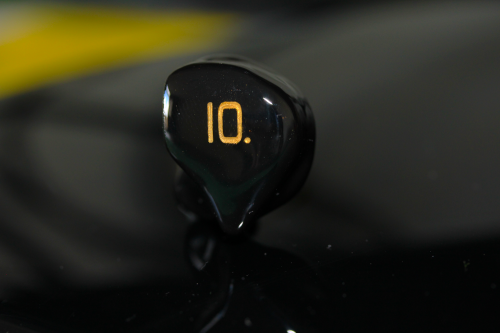





















![color]](http://theheadphonelist.com/wp-content/uploads/2016/11/A6.png[color=rgb(96, 101, 105)][center][/center][/color])

![color]](http://theheadphonelist.com/wp-content/uploads/2016/11/A1.png[color=rgb(96, 101, 105)][center][/center][/color])


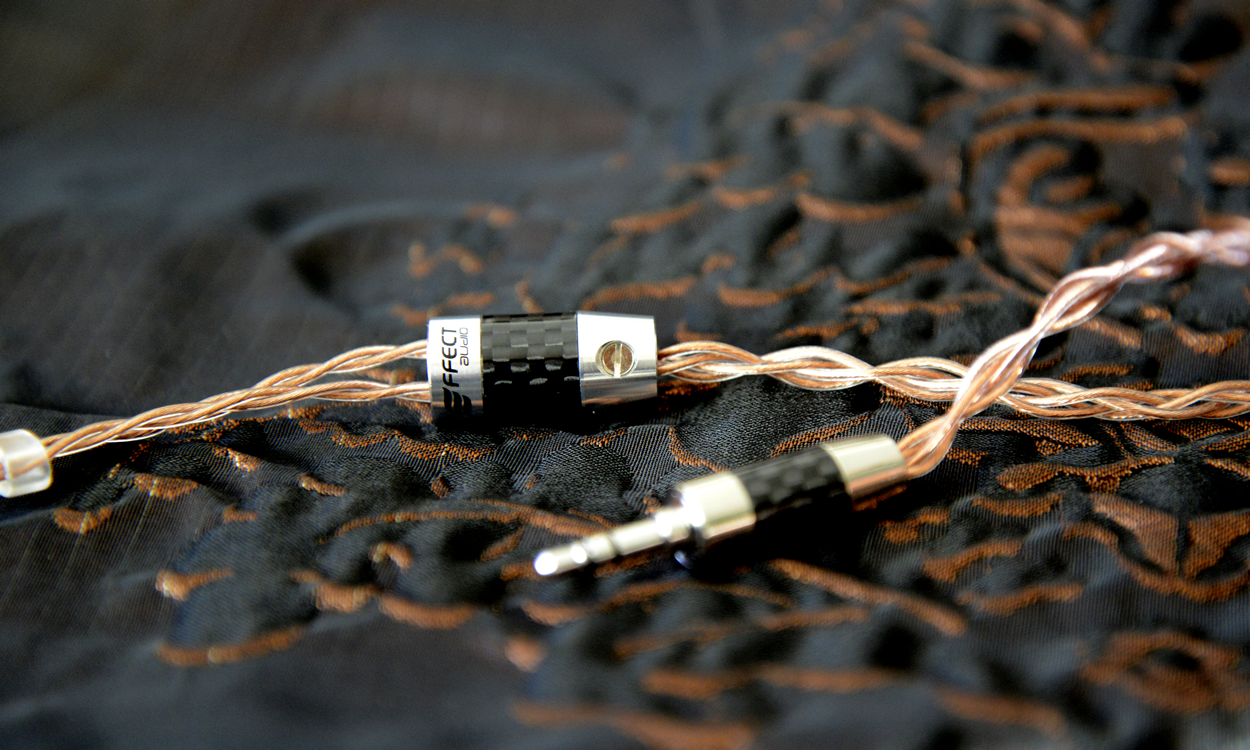
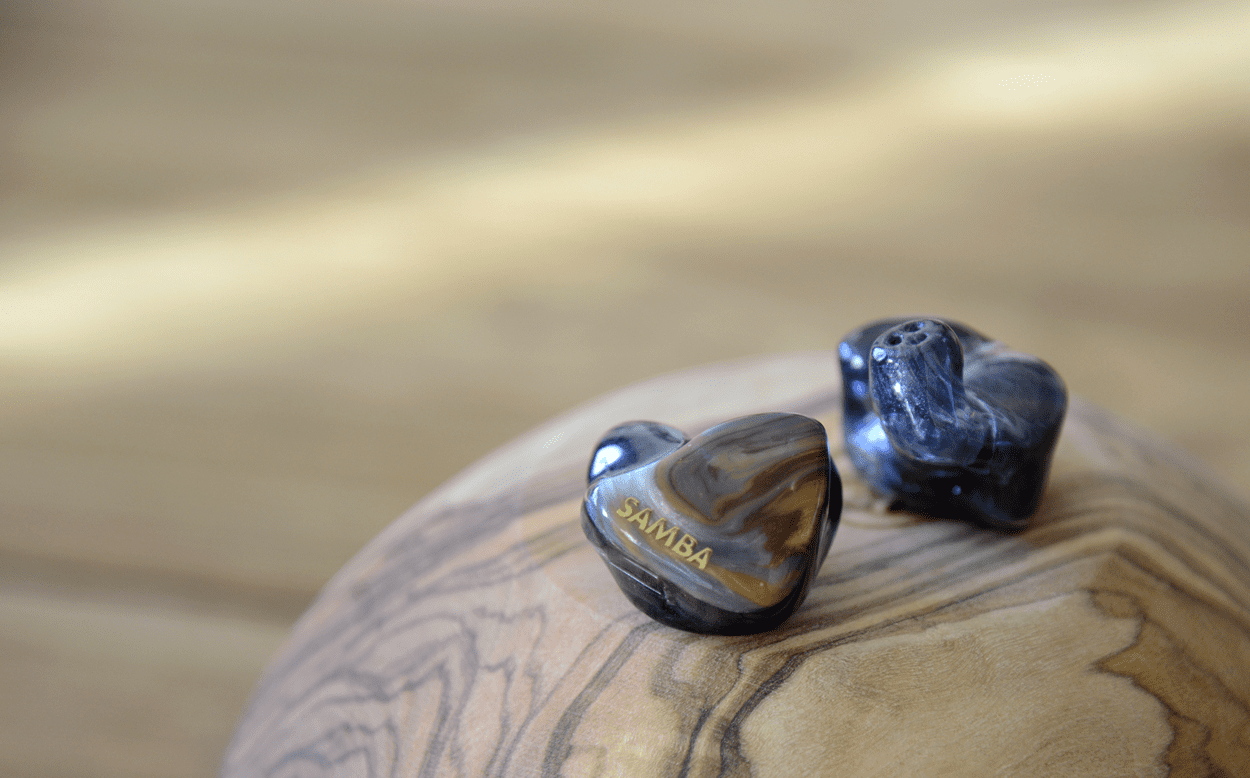

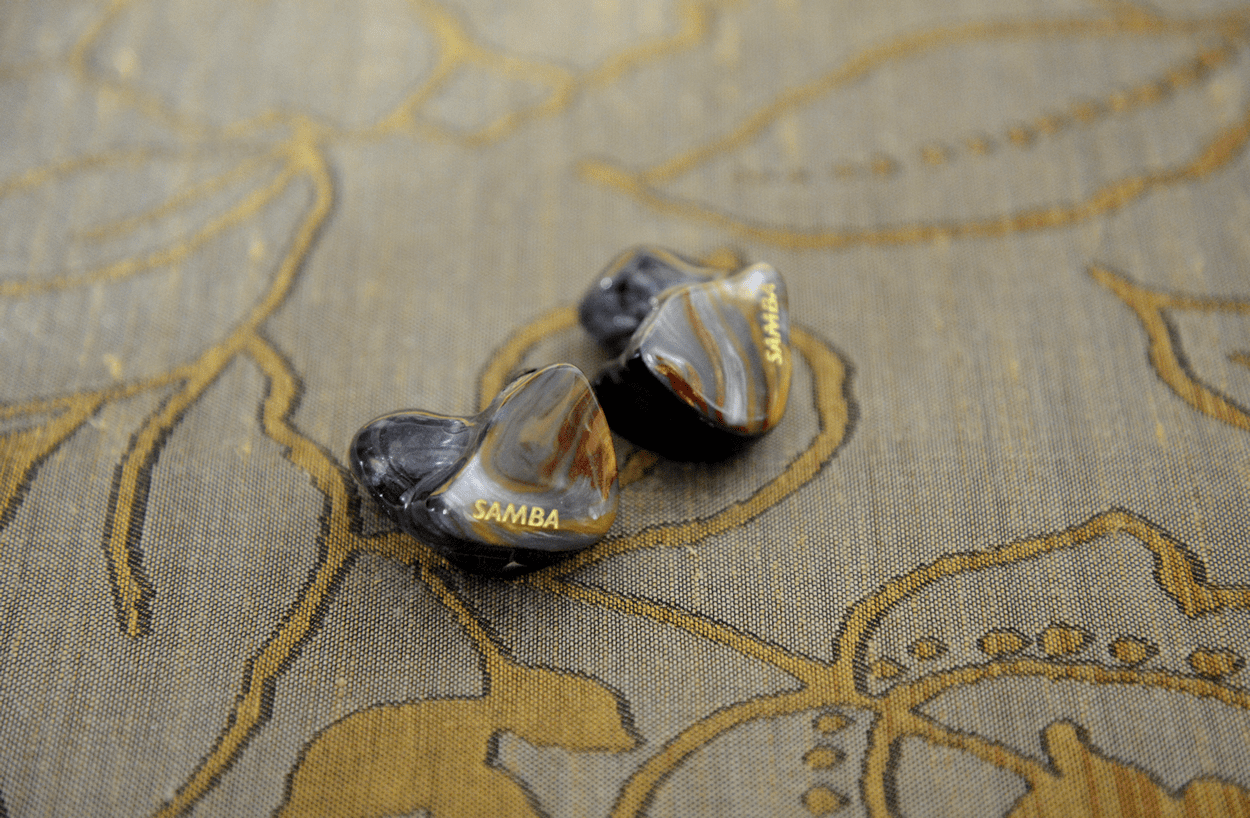
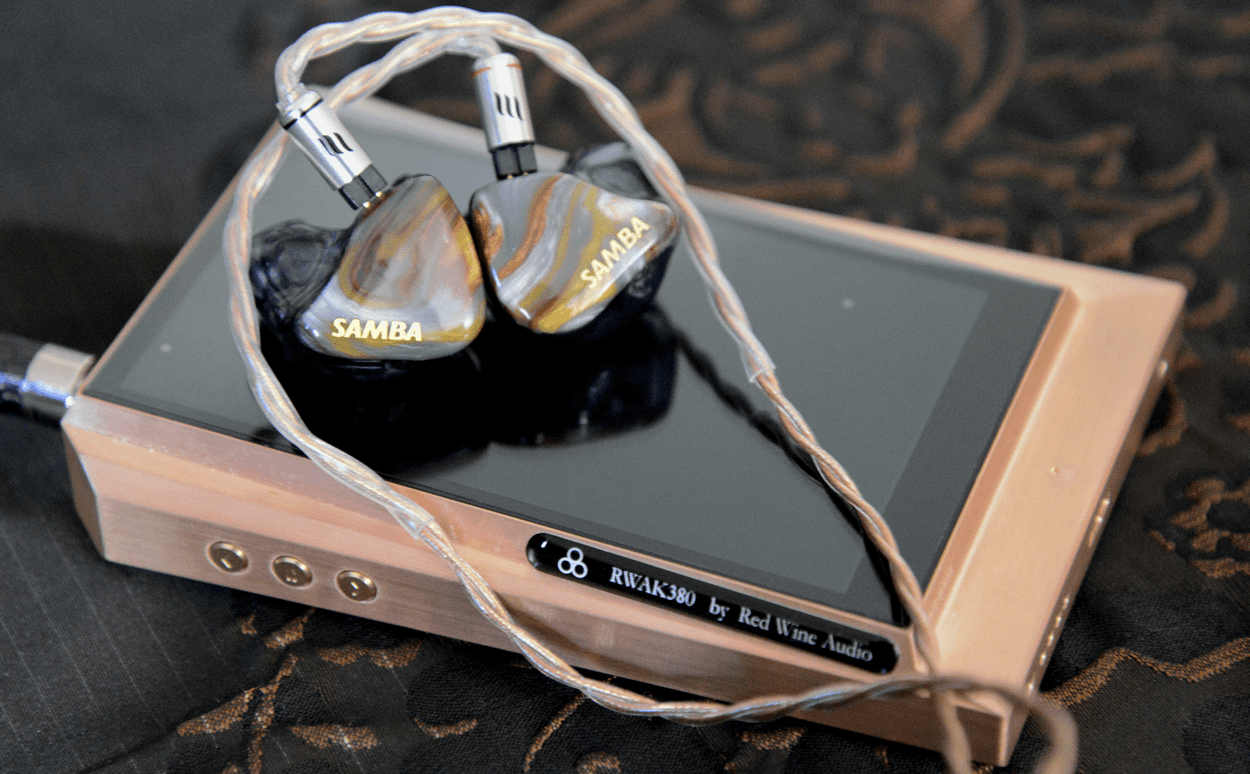




][/color])







